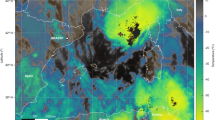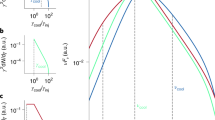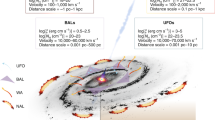Abstract
IN a recent paper Mitra1 has attempted to explain the remarkable features of the nitrogen afterglow, which have also been studied again by Lord Rayleigh2 on the assumption of an emission that would follow the recombination between the ions N2+ with electrons. It seems difficult to explain the previous observations and those described here by this simple hypothesis.
This is a preview of subscription content, access via your institution
Access options
Subscribe to this journal
Receive 51 print issues and online access
$199.00 per year
only $3.90 per issue
Buy this article
- Purchase on Springer Link
- Instant access to full article PDF
Prices may be subject to local taxes which are calculated during checkout
Similar content being viewed by others
References
Mitra, S. K., "Active Nitrogen: a New Theory" (Indian Association for the Cultivation of Science, Calcutta, 1945).
Lord Rayleigh, Proc. Roy. Soc., A, 176, 1 (1940); A, 180, 123 (1942).
Herman, R., C.R. Acad. Sci., 220, 593, 878 (1945).
Lejay, P., C.R. Acad. Sci., 216, 536 (1944).
Author information
Authors and Affiliations
Rights and permissions
About this article
Cite this article
HERMAN, L., HERMAN, R. Mechanism of the Emission Spectrum of Active Nitrogen. Nature 161, 1018–1019 (1948). https://doi.org/10.1038/1611018a0
Issue Date:
DOI: https://doi.org/10.1038/1611018a0
This article is cited by
-
Excitation of Nitrogen in a Sodium Arc
Nature (1951)
-
Nitrogen Afterglow
Nature (1948)
Comments
By submitting a comment you agree to abide by our Terms and Community Guidelines. If you find something abusive or that does not comply with our terms or guidelines please flag it as inappropriate.



